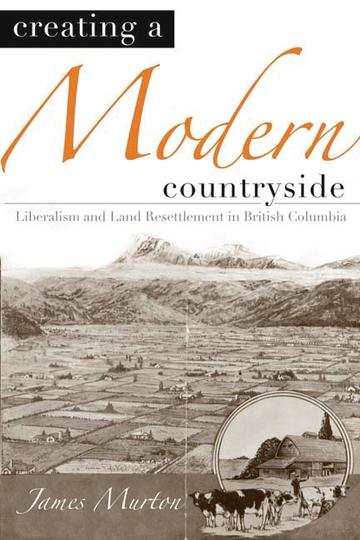About BC Books Online
BC Books Online was created for anyone interested in BC-published books, and with librarians especially in mind. We'd like to make it easy for library staff to learn about books from BC publishers - both new releases and backlist titles - so you can inform your patrons and keep your collections up to date.
Our site features print books and ebooks - both new releases and backlist titles - all of which are available to order through regular trade channels. Browse our subject categories to find books of interest or create and export lists by category to cross-reference with your library's current collection.
A quick tip: When reviewing the "Browse by Category" listings, please note that these are based on standardized BISAC Subject Codes supplied by the books' publishers. You will find additional selections, grouped by theme or region, in our "BC Reading Lists."
In the early 1900s, British Columbia embarked on a brief but intense effort to manufacture a modern countryside. The government wished to reward Great War veterans with new lives: settlers would benefit from living in a rural community, considered a more healthy and moral alternative to urban life. But the fundamental reason for the land resettlement project was the rise of progressive or “new liberal” thinking, as reformers advocated an expanded role for the state in guaranteeing the prosperity and economic security of its citizens. James Murton examines how this process unfolded, and demonstrates how the human-environment relationship of the early twentieth century shaped the province as it is today.
James Murton is an associate professor of history at Nipissing University in North Bay, Ontario.
- Winner, K.D. Srivastava Award
In Creating a Modern Countryside, historian James Murton addresses British Columbia’s distinctive attempts to promote in tandem particular ways of life and particular methods of land use. Through a case study approach to interwar land resettlement programs, Murton illustrates how “changes in the state and changes in the land were inextricably linked.”
Murton’s study exposes the complex entanglements of nature and the provincial state in a landscape that, for all Tourism British Columbia’s efforts to promote the availability of beauty and pleasure, was not always amenable to human designs.
Murton’s volume is an impressive contribution to the burgeoning subfield of Canadian environmental history, as well as an engagement with themes such as high modernism that are of importance to the international field of environmental history. And given its close engagement with liberalism, a topic of concern to Canadian historians at large, Creating a Modern Countryside is also one of the most compelling illustrations to date of why Canadian historians cannot afford to ignore the work of their environmental history colleagues.
As he details efforts at the creation of a modern countryside, Murton also provides valuable insight into the new liberal mindset, which has remained largely unexplored....
Murton promotes an expansive view of the field of environmental history, one in which the focus is not solely or necessarily on the most blatantly environmental human activities....
In addition to a penetrating analysis of new liberalism at work in interwar British Columbia, then, Murton’s work is also an example of the sort of environmental history analysis that might be possible for other ideological perspectives or, to use his terminology, general logics.
...the book offers a vivid rendering of new liberalism in interwar British Columbia, an important contribution to key themes in the fields of Canadian and environmental history, and a compelling illustration of how these fields might benefit through greater recognition of their overlapping concerns....
Murton’s main contrubution to environmental history is his analysis of state formation whithin a region, an order that depended upon establishing a new and more direct relationship with the land. Creating a Modern Countryside opens up the possibility for an exploration of the intersection between state organization, landscape ideology, and culture in British Columbia ... As a recent addition to the Nature/ History/ Society series published by UBC Press and edited by Graeme Wynn, it fits well the aim to publish high quality, lively, innovative scholarship on the interaction of people and nature through time in North America ... It challenges us to think about how our constructions of the past need to be informed by an understanding of the environment. It is a good example of how environmental historians might 'get outside and into the dirt.'



